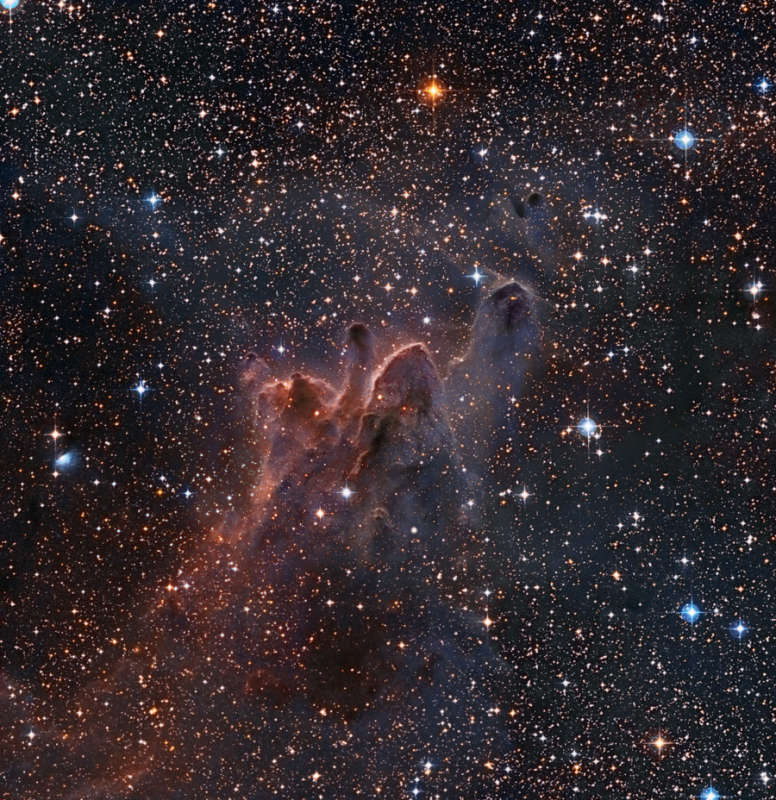Cometary Globules

Explanation:
Bright-rimmed, flowing shapes gather near the center of
this
rich starfield toward the boarders of the nautical southern
constellations
Pupis and Vela.
Composed of interstellar gas and dust, the grouping of
light-year sized cometary globules is about 1300 light-years distant.
Energetic ultraviolet light from nearby hot stars
has molded the globules
and ionized their bright rims.
The globules also
stream away from the
Vela supernova remnant which
may have influenced their swept-back shapes.
Within them, cores of cold gas and dust are likely collapsing to form
low mass stars, whose formation will ultimately cause the
globules to disperse.
In fact, cometary globule CG30 (upper right in the group) sports a
small reddish glow near its head,
a telltale
sign of energetic
jets from a star in the early stages
of formation.
Note: How to find
APOD
Alternative Mirror Sites
Authors & editors:
Robert Nemiroff
(MTU) &
Jerry Bonnell
(USRA)
NASA Web Site Statements, Warnings,
and Disclaimers
NASA Official: Jay Norris.
Specific
rights apply.
A service of:
LHEA at
NASA /
GSFC
& Michigan Tech. U.

